

Kingsway Hospital aka Derby Borough Asylum – Morgue
A good little explore, place was pretty much stripped bare and in the process of being demolished (too many of these old asylums have bitten the dust over the last 5 years). Best find was the morgue, although only small with room for 6 bodies it was still my first and I’m glad to have popped my morgue cherry now if I could just make it to the padded cell at West Park before that’s gone…
The History
Kingsway Hospital Rowditch, Derby, Derbyshire
Derby Borough Asylum
Date founded: 1884 Date opened: 1888
Postcode: DE22 3LZ
DERBY Borough came late to mental health provision, although a private asylum for paying patients was up-and-running in Green Lane, on the site of the Hippodrome, by 1820.
The county authorities managed to provide a splendid new lunatic asylum (as they were then known) for the rest of Derbyshire, on the western edge of Mickleover, to a design by Derby-born architect Henry Duesbury, in 1849.
What’s left of it is now a housing complex called Duesbury Court.
But the poor unfortunates from the borough, if diagnosed as insane, were sent to existing hospitals at Leicester or Nottingham.
In 1863, the authorities recommended that the borough build an asylum for 200 inmates but it was only in 1871, when Leicester, Mickleover and Burntwood Asylums refused to accept new Derby patients, that something had to be done.
The site all agreed on was at Rowditch – part of that still occupied by the current hospital – but the 24 acres there were considered to be insufficient.
Unfortunately, Miss Trowell, who owned and lived at Thornhill, the elegant Regency villa adjoining the site to the north, understandably refused to sell any of her 26 acres. The project stalled for another decade.
By this time, Miss Trowell had died and the Thornhill estate had passed to her cousin, Lord Belper.
He had no use for either the house (which he let) or the parkland, so he sold the grounds to Derby Borough Corporation in 1883 and, the following year, a competition was launched to design the new facility, now required to house 300 patients.
The competition attracted 150 entries and was adjudicated by the Royal Institute of British Architects.
The winner was Hull-based Benjamin S. Jacobs, an asylum specialist. The contractors were William Walkerdine and Co who quoted £31,100 for the job.
It was finished in two years, opening for 27 patients, transferred from Leicester, in November 1888.
The building, in red brick, was in a neo-Jacobean style – then still much favoured for public institutions – and was a colossal structure, grouped, approximately symmetrically, around four internal courtyards.
It boasted three monumental water towers, with steep pyramidal roofs like church spires, a central capped tower and a tall chimney.
The main elements were an administration block to the north
The much more elaborate central block was finished in darker brickwork and contained an assembly hall, with a chapel above it, which boasted a fine, openwork, trussed roof.
These were connected by a central north-south block inside the complex containing the services, like the kitchens.
This was extended by the same architect in 1891, glassed roofed verandahs were added in 1901 and further additions were made in 1902 to cope with the increase in the borough’s population resulting from boundary extensions the previous year.
From 1899 to 1902, a separate building was erected – later Albany House – for 30 female private patients, the result being a plain pile, the proportions of which were spoilt by the last-minute raising of attics to create an extra storey at the rear of the crosswings.
Architect Jacobs’s finest contribution was the Isolation Block, 1895-1897.
It was later ruined by the borough who removed the chimneys, built an awkward two-bay extension on the south-east side and added a vast porch on the south-west side, the whole being painted a most unsympathetic battleship grey by the NHS who neglected it consistently from the end of the 1970s.
After the war, in 1948, the entire complex passed to the NHS, which made additions, generally in an unsympathetic style, and demolished half the farm buildings, leaving the rest for storage.
The Isolation Block and Thornhill were bulldozed.

Kingsway Hospital aka Derby Borough Asylum – Boiler

Kingsway Hospital aka Derby Borough Asylum

Kingsway Hospital aka Derby Borough Asylum – Morgue
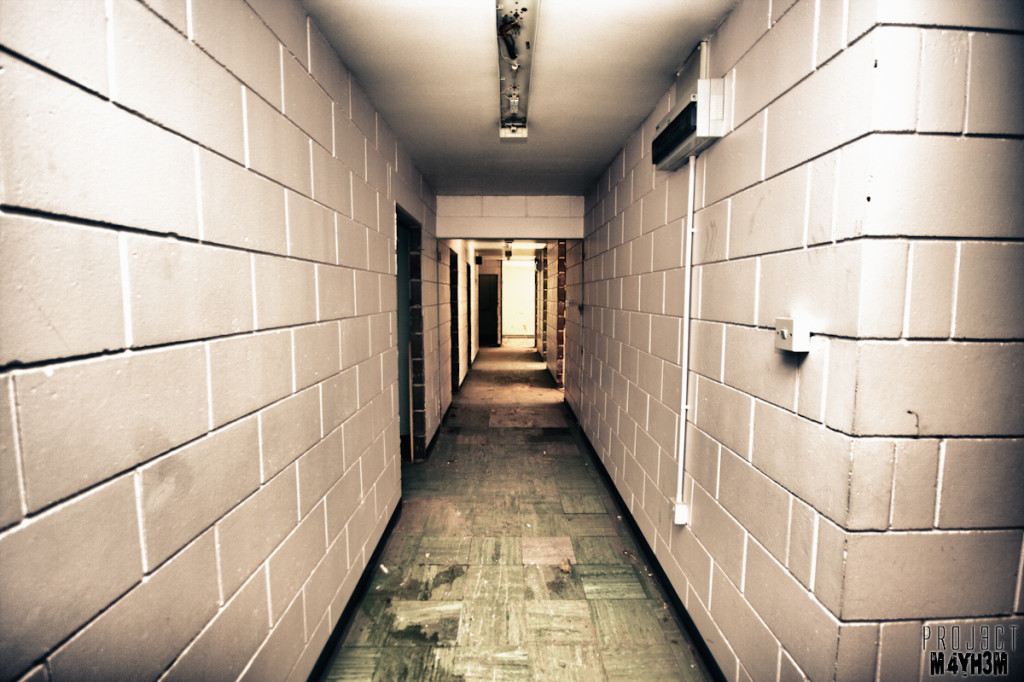
Kingsway Hospital aka Derby Borough Asylum – Corridor

Kingsway Hospital aka Derby Borough Asylum
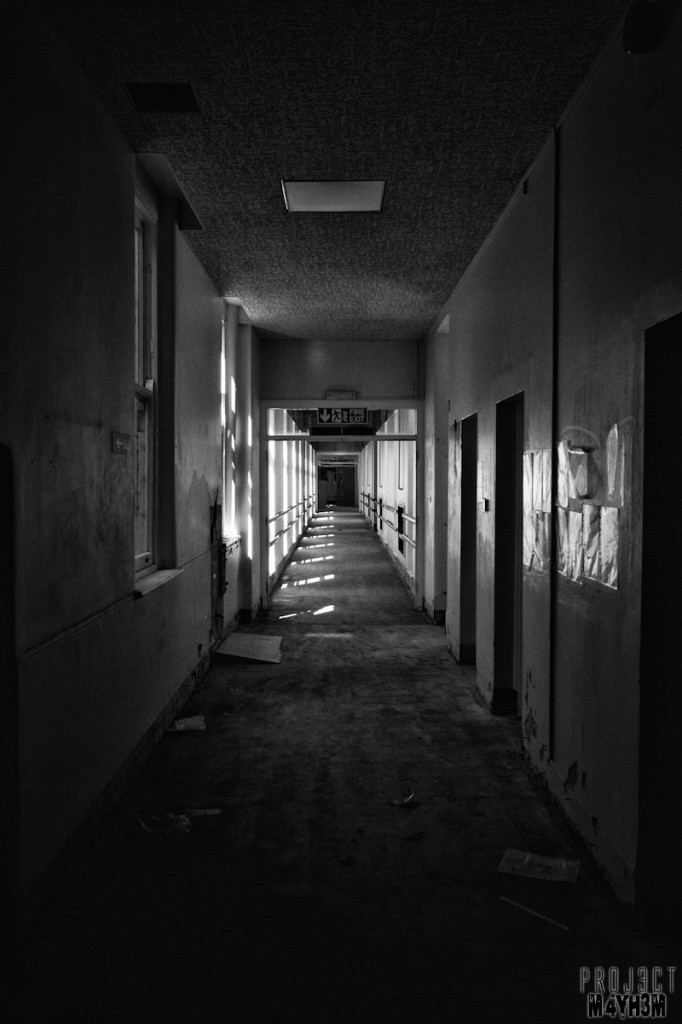
Kingsway Hospital aka Derby Borough Asylum – Corridor

Kingsway Hospital aka Derby Borough Asylum – Bath

Kingsway Hospital aka Derby Borough Asylum – Corrifdor

Kingsway Hospital aka Derby Borough Asylum – Great Hall

Kingsway Hospital aka Derby Borough Asylum – Lonely Chair
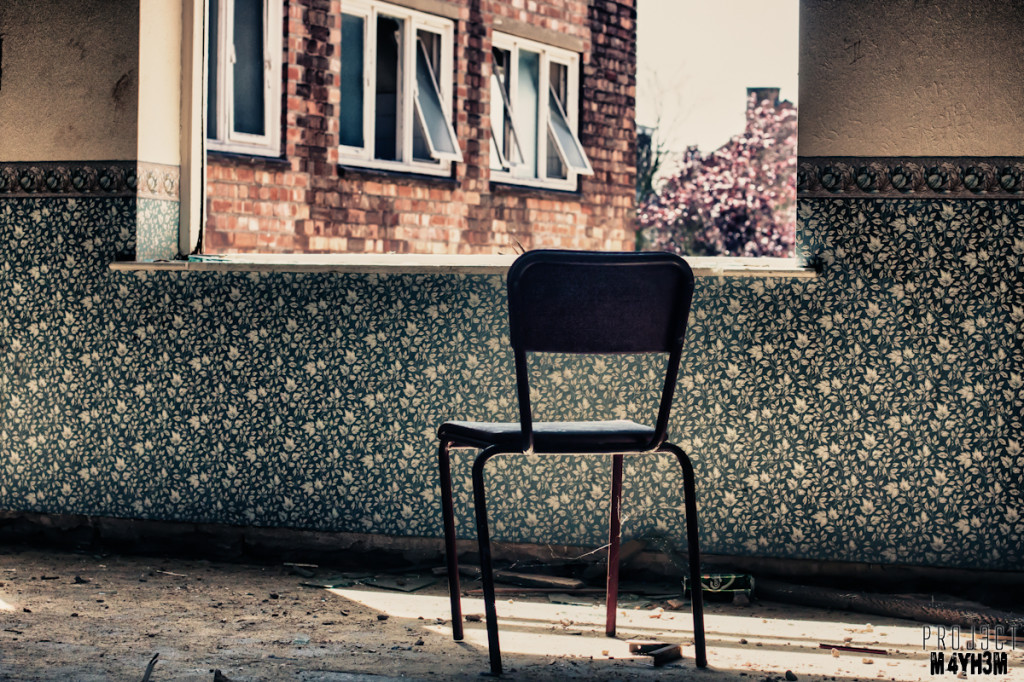
Kingsway Hospital aka Derby Borough Asylum – Lonely Chair
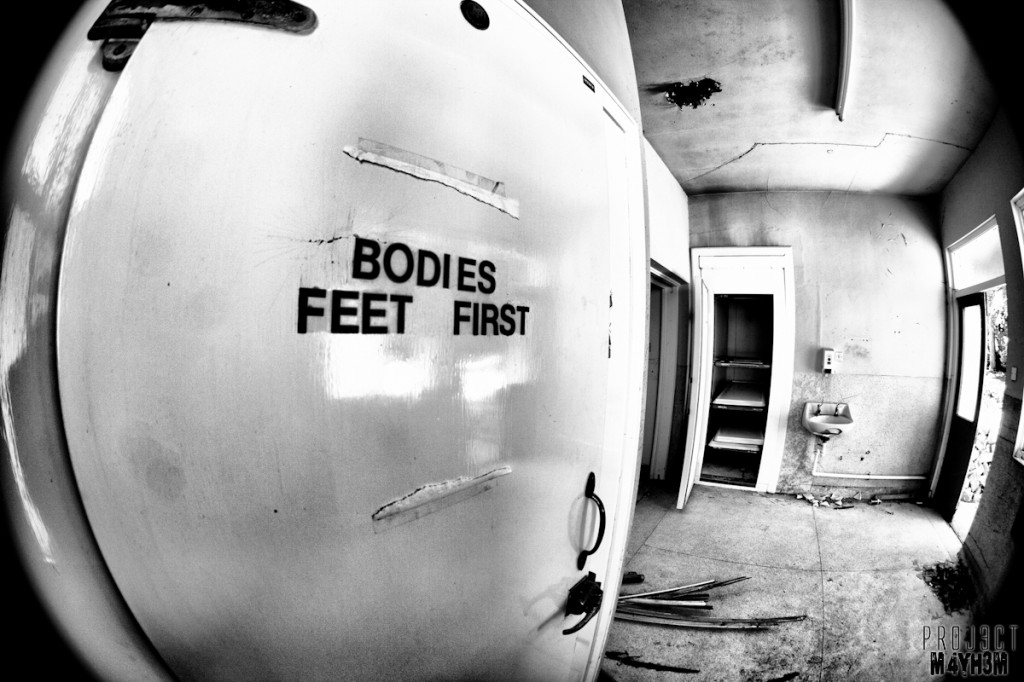
Kingsway Hospital aka Derby Borough Asylum – Bodies Feet First
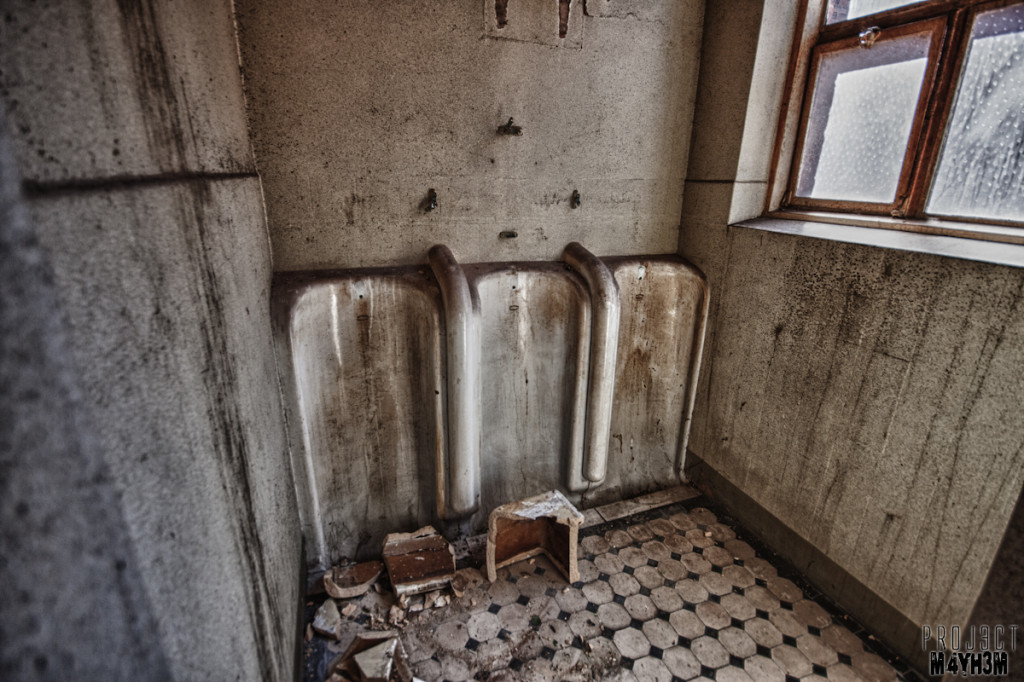
Kingsway Hospital aka Derby Borough Asylum – Urinals

Kingsway Hospital aka Derby Borough Asylum – Mirror
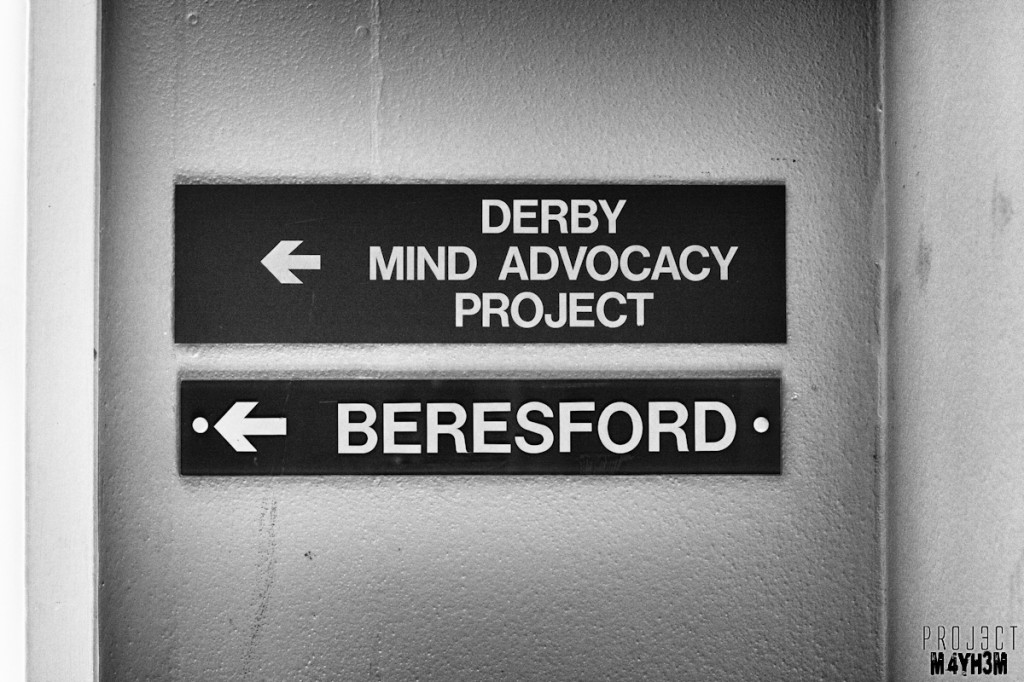
Kingsway Hospital aka Derby Borough Asylum – Derby Mind Advocacy Project
For more historical information on Kingsway Hospital visit bygonederbyshire.co.uk
If you’ve made it this far… thanks for reading / checking out the pictures. Leave me a comment below or hit the like button to let me know you’ve enjoyed the shots and to encourage me to keep posting more 🙂
Limited Edition and Canvas prints, as well as regular prints, are available for all of the images above just ask me about prices.
Facebook: http://www.facebook.com/Proj3ctM4yh3m
Google+: http://plus.google.com/u/1/116447183232474936433/posts
500px: http://500px.com/proj3ctm4yh3m
flickr: http://www.flickr.com/photos/proj3ctm4yh3m/
Vimeo: https://vimeo.com/proj3ctm4yh3m
Twitter: https://twitter.com/PROJ3CTM4YH3M
Youtube: https://www.youtube.com/user/PROJ3CTM4YH3M/videos
Instagram: http://instagram.com/projectmayhemurbex
Tumblr: http://proj3ctm4yh3m.tumblr.com/


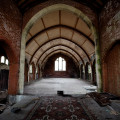

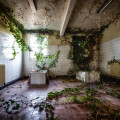




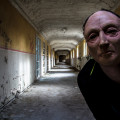


I worked as a student nurse in 1988.at pastures hospital…. Equally interesting stories I’m sure! But my grandad died in kingsway in 1981 . I remember visiting him ther as an 11 year old. He had senile dementia and it broke my grandmas heart when he was admitted. It was a scary place to me all those years ago.
yes, it was. i’m glad you got the pics you did though tbh. i have some pre demo, but was particularly curious to see what it was like during 🙂
your work is really good, and i appreciate it can’t be easy getting into these places sometimes!
regarding the old patient files – i remember a lot of them being collected by a local archivist, so they will be stored somewhere
Hi TP, thats really interesting you’ve put my mind to rest on that matter 🙂 it would be interesting to see some of the old files I know they are normally protected for 100 years or so due to data protection…I might have to look into it! I’m quite into looking at old blueprints too… the archivist may have acquired some of those too with any luck :).
Thanks again
PM
yes, maybe! the building was fascinating. i knew every nook and cranny of it – as a porter, i had access to all the old wards and offices as they closed, one by one over the years. you would have loved exploring it all back then, as did i. good luck with your search for those old records!
I wish I had got to it a little sooner… demo was well underway and the place as you can see was largely stripped 🙁
Hi TP and thank you very much for your comment and kind words! Its really nice to hear when my photos are appreciated and its more fulfilling when its ex staff or patients. Those fridges were the first I had ever seen, ive been to a number of them since but these will always hold a memory with me 🙂 I had often wondered since my visit what the ‘Mind Advocacy’ project entailed…
All the best and thanks again
PM
the advocacy service provided confidential, independent support in relation to the mental health services they were receiving. although it was independent to statutory services, it was based at kingsway and continues to provide the same support from its offices in the new build, which is on the same site.
not sure why it was referred to a ‘project’ on that sigh tbh. the sign would have been supplied by the mental health trust – who knows what they thought we did! lol
i worked at Kingsway for a number of years, first as a porter (i’ve put many a dead body in those fridges!) and then at Derby Mind Advocacy. thank you so much for these photographs, they bring back so many memories! i miss this place and a lot of the long-term patients that were there. some really sad stories, as i’m sure you can imagine!
Mint photos. I worked there as a cleaner whilst at uni. The hospital has been the topic of many interesting stories I have told over years. Some great memories and freaky encounters. Shame it’s gone.
Hi Phil,
Thanks for your comment, I really appreciate you taking the time to leave some feedback! I think I may have got to this one a little late unfortunately alot of things had been stripped out and demolition was already underway. Still it was a pleasure to see it before it was gone.
PM
Yeh there were some interesting record books I came across once from patients at the turn of the last century that I wanted to get hold of again. But who knows where they are now. Some very very odd cases in there. Pretty sickening what they use to do to the patients. But still an interesting insight into its history.
Wow really? that sounds very interesting! I love reading old patient files but they are few and far between these days with most of the old asylums having been stripped out and in most cases demolished or reconverted into housing. There are a few books out there on some of the larger asylums that detail the history and if memory serves correct I think patient records older than 100 years are available to view from the local council assuming they still have copies…
Thanks again PM
Thanks for printing the pictures of Kingsway hospital . I worked there as a young student nurse back in 1987 . Sad to see so much decay, part of history disappearing.
Hi Kay,
You are very welcome for the photosgraphs and thanks for your comment, I always enjoy hearing from ex staff members of these sorts of places. It looked like quite a large place? a few buildings had already been demolished when i went but there was still plenty to see. This place has been fully demolished now I understand?
Regards
Ben